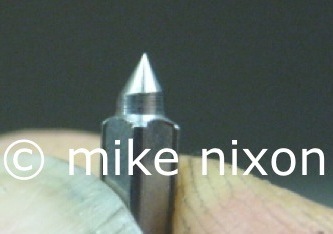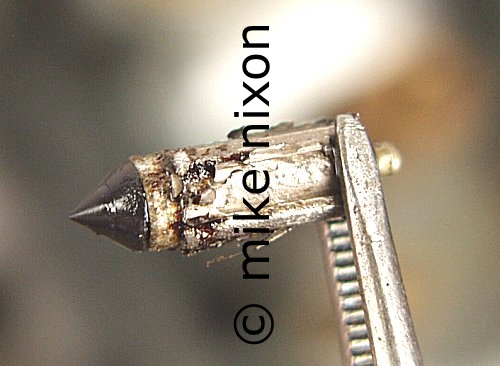  ® ®
|
The most critical carburetor parts |
|
Alright, here's the deal. The very last factory Honda 550 and 750 four float valves and needle jet/jet needle sets in captivity have just been purchased. The clock is ticking. I can basically do one or two more rebuilds on these models and that is it. No more unless CMS or ebay pops up with a part now and again. This is sad.
As a carburetor rebuild customer there is one thing you need to understand above all else. A thing you have probably never thought about, a thing that has probably never even been on your radar, and yet it is the single most important aspect of your carburetor rebuild. It's more important than the method of cleaning, more important than shipping methods, and believe it or not, even more critical than the experience and reputation of the rebuilder you choose. Float valves. Ninety percent of carburetor rebuilders, including some pretty well known ones, ignore the simple but scandalous fact that the huge glut of available aftermarket float valves from all kinds of sources are absolute crap and will turn even the most skillfully and carefully performed carb rebuild into a disaster. They're simply not well made. And with a carburetor's float system already by design being a tenuous quest for liquid tightness, aftermarket float valves just turn a peaceful but delicate detante into a full-fledged war, guarantying that the customer will have to be constantly vigilent and learn to make allowances and excuses for chronically incontinent carburetors.
Float valves
Now you know why I rebuild only Honda carburetors. They are the only Big Four brand factory float valves can be got for now. Later Kawasakis used the same brand of carbs as Honda so I do late model Kawasaki carburetors frequently also. But if I can't get factory float valves for a carb set I won't rebuild the carbs. I won't make excuses. That means I don't do older Kawasakis, Yamahas and Suzukis. There are no OEM float valves left for these.
And now, finally, and tragically, even the Honda float valves are drying up. I won't start using crap float valves and making excuses to my customers. What a terrible thing to have to do. Here's the thing, though. Why aren't the rebuilders who use K&L, Keyster, Napco and other float valves making such excuses? Why aren't their customers being warned that the carbs will overflow? It's perplexing to me. Maybe most customers fail to maintain their carbs from one season to the next, and thus they never realize the poor quality parts that are in there, chalking up eventual leaking issues to "it's time to rebuild them again." And it's even more likely most rebuilders just don't care. Too awfull bad, that is.
Needle jet/jet needle sets
The jet needle may contain the most careful engineering of any part in the carburetor. There is a reason a given model carburetor will have a different needle in almost every year of its production. They are that highly developed. The aftermarket, specifically carb rebuild kit suppliers, cannot hope to match this level of sophistication. The result is they make do. And not very adequately at that. And the very poorest quality part in any rebuild kit, the one that will do the most to ruin your carburetor, is the jet needle. As with the float valves, I have been comparing them to OEM for decades. They have never measured up. Replacing the OEM float valve or jet needle/needle jet set with aftermarket parts is the severest form of carburetor abuse.
And as of this month, the situation has taken on more seriousness. Honda has finally run out of these parts, the needle jet/jet needle set. Even the hoarders such as CMS and David Silver are out of them. They're gone. What this means is rebuilders must soon cease rebuilding inline four SOHC Hondas.
The float valve and needle jet/jet needle set. The heart of the carburetor and the ultimate challenge for the carburetor rebuilder. And now part of history.
|

|

|
|
|
This is a K&L float valve needle, the best aftermarket float valve part obtainable. Intended for a CB350F. Nice, huh? Not. You should see the finish close-up, tool marks and all. Far inferior to OEM. |
This is another float valve needle, again from K&L, the best of the aftermarket. Unlike OEM they are zinc plated, meaning they are likely zinc or another poor quality metal underneath as well. Their weight confirms it; they weigh more than twice as much as the stock part. This came out of an otherwise completely stock CBX1000. |
© 1996-2021 Mike Nixon